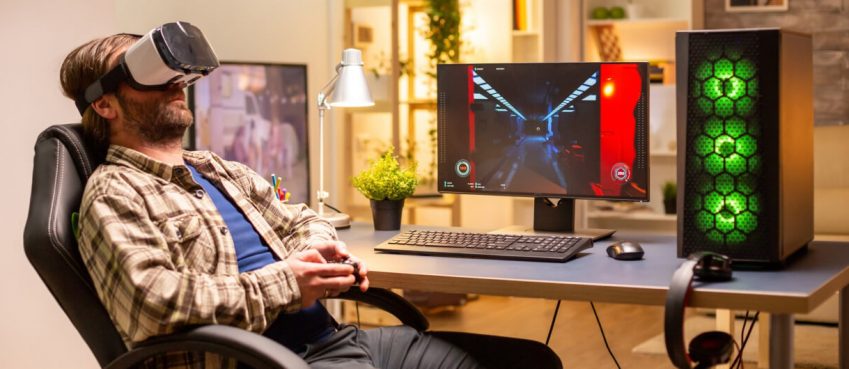
Safety on the road is not a choice. Now more than ever, when road traffic is at an all-time high, and local roads and twisted highways are buzzing with high-speed automobiles.
Technology is relentlessly working to keep you and your family safe behind the wheels. Add modern car accessories to your existing vehicle and enhance your driving experience.
Heads Up Display (HUD) is your driving assistant and a reliable navigator, in case you’re missing one by your side.
What is HUD?
HUD was extensively used on fighter jets to display critical flight-related data on a see-through screen in the forward line-of-sight of a pilot. It allowed the pilot to remain focused and not race through all the dashboard displays that may be few centimeters away. Fighter pilots can’t afford attention-switch.
The technology gradually seeped into the automobile industry. The automotive HUD presents a transparent display in front of the driver.
The device communicates information between the vehicle and the motorist and displays vital stats like speedometer, RPM data and navigation system at the eye-level.
It’s more like a Google glass for your car. The image is formed behind the actual reflective screen at a spot referred to as the Virtual Image Distance (VID).

Manufacturers like Honda, BMW, Mazda and alike provide OEM HUDs with high-end models. But you don’t need to get rid of your grandpa’s Plymouth Road Runner to appreciate the convenience of a HUD. Plenty of aftermarket solutions are available to modernize your existing ride.
Types of automotive HUD
- Combiner HUD: In this design, a transparent screen in the motorist’s field of view forms the image projected by the base of the device. The instrument sits on the dashboard just behind the windshield.
- Windshield HUD: Here, the image is projected onto the windshield itself.
For both designs, the virtual image appears behind the reflective surface (around 2 to 3 meters from the motorist), which helps the driver to maintain focus on both the display and the roadway.

How it Helps You?
By using HUD, you get the Eye-on-the-Road-Benefit. You don’t have to look down or sideways anymore while driving. The information that is needed to keep you on track and within safe limits is right in front of you.
You don’t have to skim over the dashboard or fumble around for the phone, which means – lesser accidents.
Distracted drivers have slower reaction times and struggle to remain in their lane. They are four times more susceptible to be involved in a road accident.
Types of HUD Available for Your Car
Quite a few different options of automotive HUDs are available to help you decide.
1. Mobile Apps
Why not involve your smartphone itself to guide you instead of distracting. Free Apps are available to provide you Heads Up Display feature without spending an extra penny.
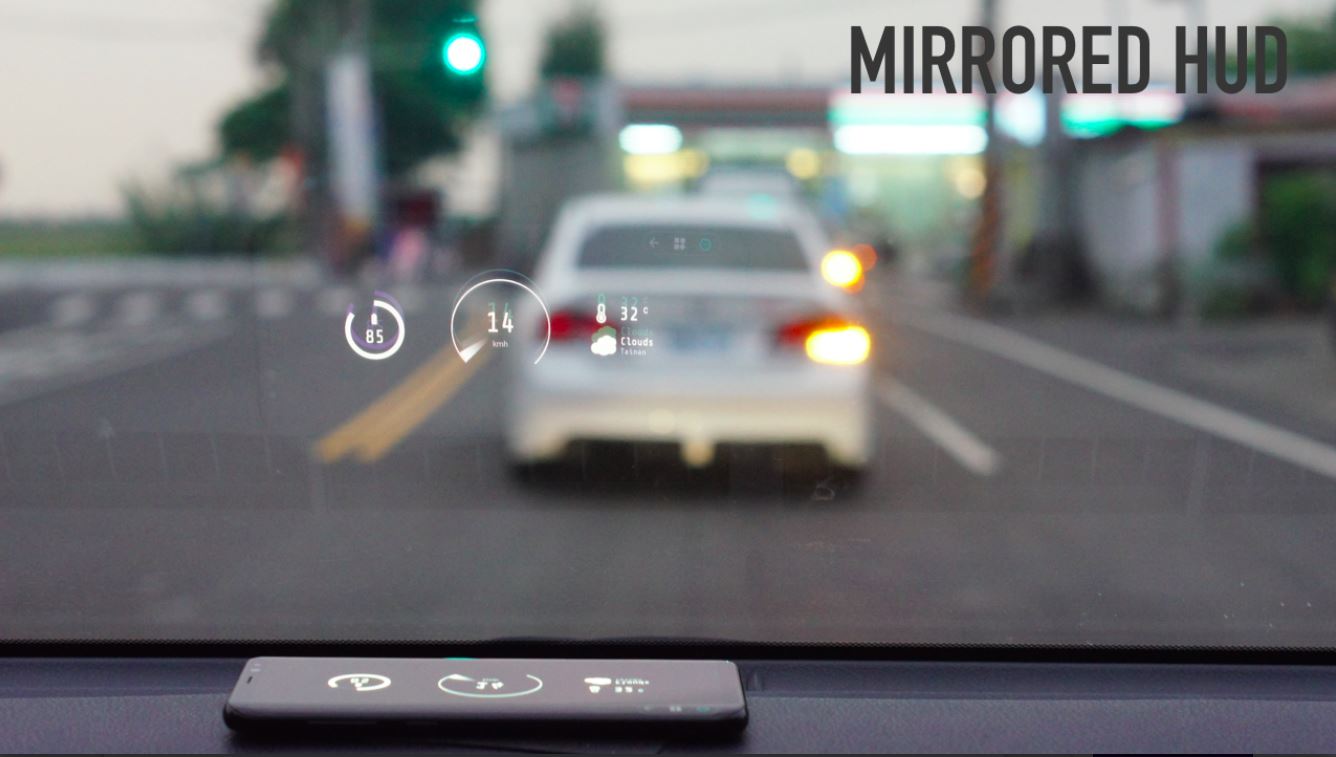
Navier HUD is an Android navigational App designed to project the smartphone screen onto the windshield. Keep the phone in front of the windshield and enable the HUD mode. You can switch to normal mode and use it on a phone holder.
The App extracts information from the OBD2 dongle in the car. It also calculates real-time data from the phone sensor. Together, it sends all the driving information to the screen, which includes speed, RPM, fuel level, engine coolant temperature, GPS and gyroscope.
The panel comes with customization options to let you design your panel layout.
2. Car Dash Phone Mounts
Dashboard phone mounts take their design cue from Combined HUDs.

HUDWAY Glass offers a lightweight adjustable phone mount and a transparent mirror-coated tinted plastic lens to reflect the smartphone screen as a heads-up-display.
You can adjust the phone screen brightness to avoid any second reflection from the windshield. The glass offers good results, even on a clear day due to its reflection rate design. The glass angle is adjustable for a better view. For more clarity, opt for green UI elements.
The jelly-glue adhesive grounds the Glass mount firmly on the dashboard and leaves no traces once removed.
3. Standalone instruments
A myriad of standalone HUD devices are available in the market, so you don’t have to keep your smartphone engaged in the process.
Truescan 3000 HUD is one such aftermarket solution. It displays vital data on an LED screen, which is projected and displayed on a reflective glass. Its brilliant light transmittance rate provides a crisp display even after dark.
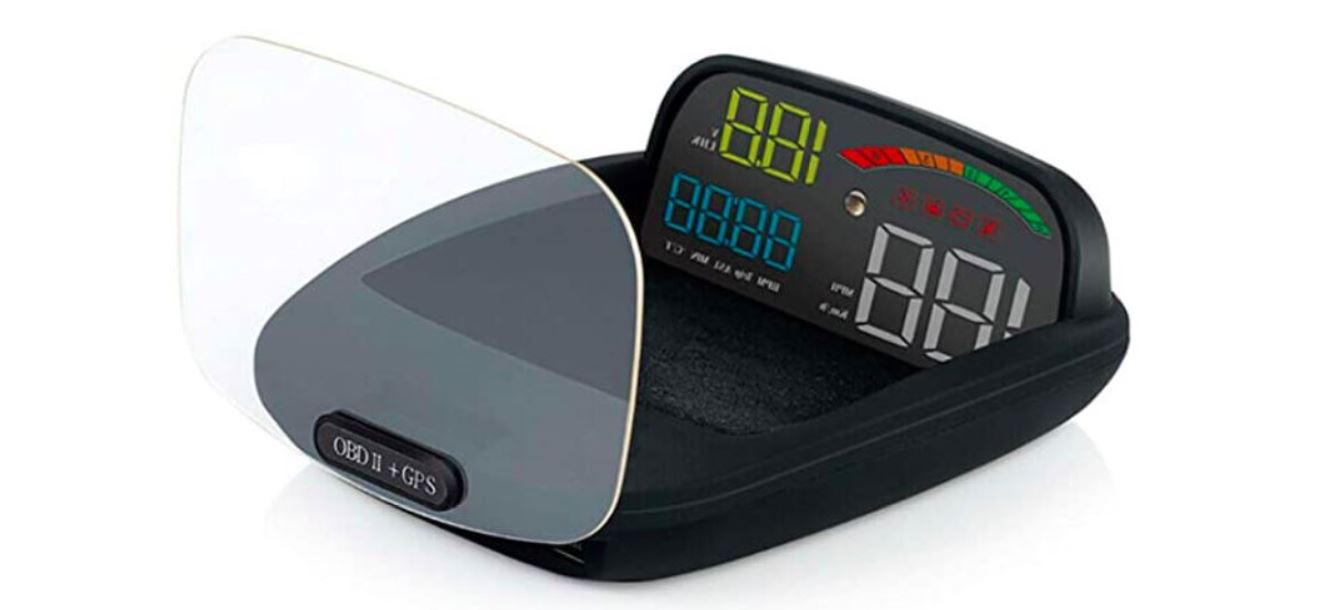
The device is capable of displaying a lot of helpful stats like speedometer, engine speed, RPM, water tank temperature, mileage, battery voltage, and even altitude if needed. An in-built photosensitive element senses ambient light and keeps double-image away.
Truescan 3000 HUD is also equipped with alarms and reminders. Life-saving reminders like RPM alert, over-speeding warning, low voltage trigger, fatigue driving alert, high water temperature alert, etc. keep you secure and safe while behind the wheels.
The life-saving instrument works best if your car has an ODB2 interface. But it works just fine even if your vehicle only has a GPS interface.
TIMPROVE T600 – Universal Car HUD is a portable plug-and-play device that doesn’t even need a separate reflective glass or the windshield. It comes with a 2.2-inch-high-definition LCD color-smart screen that displays all the vital driving information.
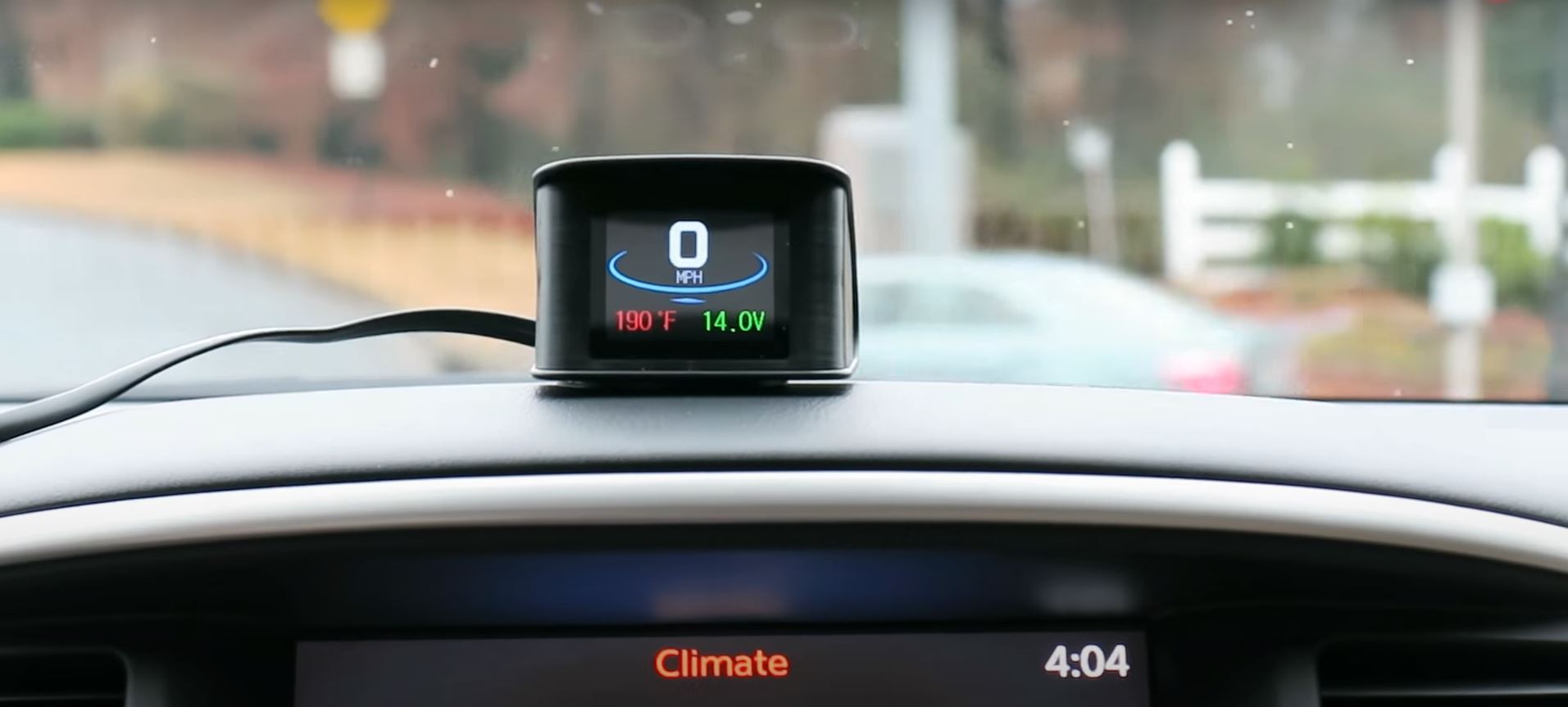
The screen is tilted at a 30-degree angle and produces a crispier display than windshield HUDs. The model fits every car as it’s based on a GPS module. Information like break performance, speed, navigation, low voltage alarm, over-speeding alarm, altitude, satellite time, and much more is available in a convenient position in front of you.
The disadvantage of this model is — your eyes have to focus back and forth between the screen and the road ahead.
Next-Gen HUD
Augmented Reality (AR) in HUDs is the next evolution towards offering you an even safer driving experience.
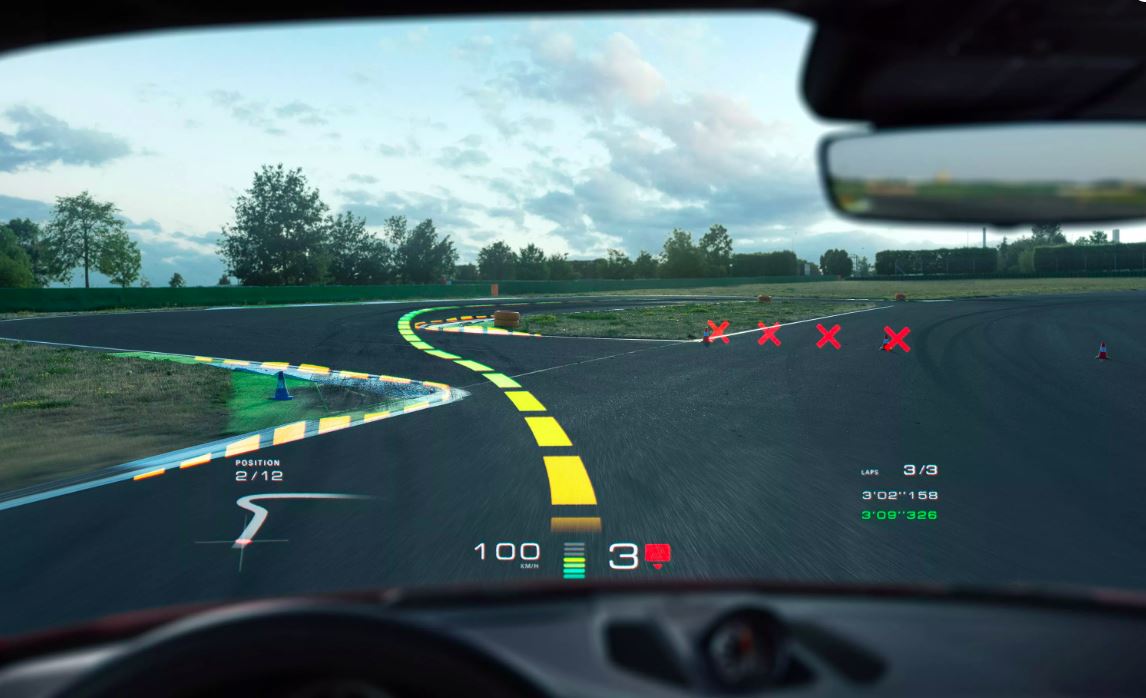
The Advanced Driver Assistance System (ADAS) aims at overlaying AR graphics onto real-world objects. By increasing the VID, the images are projected at a longer distance from the driver allowing the virtual image to fuse with real-world situations.
The ADAS feature enables the driver to quickly identify the threat without having to change the point of focus. Reaction time enhances immensely, even in low visibility.
While current-day HUDs have significantly improved driver agility and performance, it’s not without limitations. High-definition images blended with real-world objects are bound to enhance driver reaction times and situational awareness with the arrival of AR-HUD in the hands of consumers.
Top 10 News
-
01
The 10 Best Companies Providing Electric Fencing For Busines...
Tuesday March 11, 2025
-
02
Top 10 Social Security Fairness Act Benefits In 2025
Wednesday March 5, 2025
-
03
Top 10 AI Infrastructure Companies In The World
Tuesday February 11, 2025
-
04
What Are Top 10 Blood Thinners To Minimize Heart Disease?
Wednesday January 22, 2025
-
05
10 Top-Rated AI Hugging Video Generator (Turn Images Into Ki...
Monday December 23, 2024
-
06
10 Top-Rated Face Swap AI Tools (Swap Photo & Video Ins...
Friday December 20, 2024
-
07
10 Exciting iPhone 16 Features You Can Try Right Now
Tuesday November 19, 2024
-
08
10 Best Anatomy Apps For Physiologist Beginners
Tuesday November 12, 2024
-
09
Top 10 Websites And Apps Like Thumbtack
Tuesday November 5, 2024
-
10
Top 10 Sites Like Omegle That Offer Random Video Chat
Monday October 21, 2024


